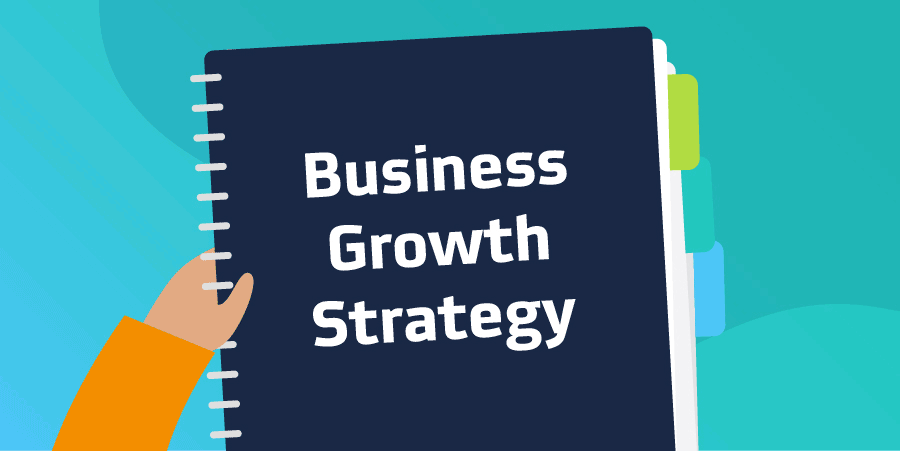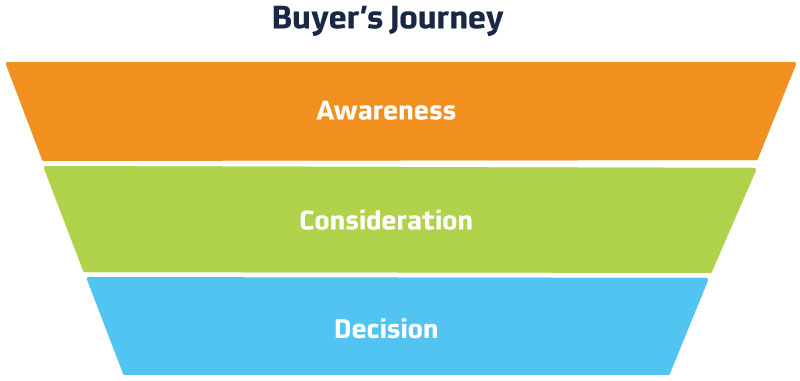Mastering Business Growth Strategy: Crafting a Plan to Deliver Results
 Krista
|
Krista
|

If you've put the time and effort into running a business, you want to see that business thrive for years to come. Unfortunately, only about half of businesses survive their first five years. To ensure the longevity of your business, you need to focus on growth.
What is a Growth Strategy?
When discussing "growing" your business, we discuss increasing its value. You can measure value by your business's net worth, customer reach, or the variety of products and services you offer.
Growing a successful business starts with a solid strategy. Every business decision you make costs your company time, money, and other resources. You want to make a decision that leads to a return on those investments, not a loss.
A growth strategy helps you decide how and where to invest your resources and grow your business. A good strategy starts by recognizing your challenge: what do you want that you currently don't have? Once you've identified the challenge, determine what needs to change to reach your goal. Then break it down into individual steps. A strategy should be a roadmap for your business's next growth stage.
When growing a business, you want to ensure sustainable growth. You are setting yourself up to grow continuously over a long period, not looking for a quick boom that fades just as quickly.
The Ansoff Growth Matrix: 4 Strategies for Growth
In general, growth strategies fit into one of 4 categories as defined by the Ansoff Matrix. The matrix helps business owners analyze the risk of a business growth strategy by looking at the products they are offering and the markets they are targeting.

Market Penetration
When you focus on existing products in your existing market, this is called market penetration. It is generally considered the lowest risk of the four growth strategies. Marketing penetration boosts customer loyalty and retention, lures prospects away from competitors, and generates more high-quality leads.
A marketing penetration strategy might include offering a promotion for one of your products or services or bundling multiple offerings together. You can also implement a market penetration campaign without lowering the price of your products or services. Instead, you can focus on updating your current marketing campaigns and developing better creative content.
Market Development
Market development is when you target a new market with your existing products or services. While this strategy carries more risk, it can also lead to great rewards. You may alter your current offerings slightly by adding features to appeal to the new audience you want to target. However, developing a new market is different from developing a new product.
The market development process starts with extensive research to identify the new market segment you want to target. You can target a new customer base by many factors, including age, location, income, lifestyle, and more. Once you've identified a target segment, you must adjust your targeting and marketing strategy to appeal to them.
Product Development
Product development is when you introduce a new product to your existing market. In general, your new product should be at least tangentially related to what you already offer. The goal is to reach more people in your existing market or engage past customers by giving them more options.
Like any growth strategy, this involves doing consumer research. Product development research focuses on what products are currently in high market demand and what your competitors offer. Just like when you launched your initial product or service, you need to find a way to differentiate your new offerings and stand out from the competition.
Diversification
Diversification strategy is the riskiest of the four growth strategies. With product and market development, you have a familiar product or market to fall back on. Diversification involves introducing a new product to a new market.
If you manage to do it successfully, the rewards can be immense. Most businesses turn to diversification in the face of a challenging market. Extreme financial downturns and steep competition may force businesses to choose between taking a substantial risk in diversifying their business or facing potential closure.
Five Key Steps To Walk Through When Building Your Strategy
Once you've identified the growth strategy that makes the most sense for your business, it's time to create a marketing strategy to support it. Your business growth strategy helps you set a goal. Your marketing strategy outlines the step-by-step process for reaching that goal.
Step 1: Identify Your Value Proposition
Defining your unique value proposition is the first step to building any marketing strategy. Customers buy from you when you offer something that only some people in your niche do. The value proposition should be unique and help solve the customers' problem. A successful marketing campaign hinges on how well you can articulate what makes your brand or product unique to your potential customers.
Step 2: Define Your Target Audience
Whether you are targeting a new or existing market, you must understand that market inside and out. What do they want? What is their biggest challenge or frustration? What do they value most? How can your product or service help them? What channels do they spend the most time on?
Answering these questions will help you build out your buyer personas. A buyer persona is a profile of a fictional person who can stand in for your average customer. Developing a buyer persona helps you create clear and specific marketing messages that resonate with customers most likely to buy your product. If your business provides products or services for other businesses, you will use an ideal buyer profile to define the type of companies your marketing targets.
Every one of your paying customers starts as a stranger to your brand. Marketing teaches them more about you and what you offer and convinces them to buy. If you come in with a hard sell when potential buyers are still trying to figure out who your brand is, you could scare them off.
Understanding where your customers are in their buyer's journey and how to effectively market to prospects at each stage is essential to a successful marketing campaign.

Step 3: Study Your Competition
A successful marketing strategy will make you stand out from the competition. This only works if you know what your competition is doing. You want to get in front of customers who usually buy from the competition and convince them to buy from you instead.
You should conduct a competitive audit early in your marketing strategy development process. What keywords do your competitors market with? How do they rank on the SERP, and how much authority does their domain carry? What are their top-performing web pages? In addition to quantitative data, you also need to collect qualitative data. How do they present their unique value proposition? What do customers like or not like about them? How can your company meet those unmet needs? After these metrics are collected, you can identify openings in the market and ensure your value proposition is unique.
Step 4: Set Clear Goals
How do you know if your business growth strategy has been successful? Before you start, you need to decide on clear, measurable goals and identify the key performance indicators you will track to ensure that you are meeting those goals. Specific and measurable goals can be increased revenue, sales, or website traffic within a certain period, such as six months or a year.
You can also set smaller benchmarks throughout the campaign to analyze whether you are progressing toward your goal. For example, if you've only hit 10% of your revenue goal 3 months into a 6-month campaign, it may be time to reassess your strategy and adjust. Goals can be measured with a combination of leading and lagging indicators. A lagging indicator helps make sense of a change after it happens while leading indicators predict changes. Therefore, they provide the most insight when you use them together.
Step 5: Establish Consistency
Find openings where your competition isn't marketing but where your customers are. Sculpt your messaging using key points from your persona and your value proposition. From here, it's important that your plans have consistency. Without consistency, your marketing will fall flat, and your growth goals may go unrealized.
Implement Your Growth Strategy
By focusing on building a successful growth strategy, you can achieve longevity for your business. As your leads and sales increase, you need to consider a couple more things. Do you have the workforce, resources, and expertise to support your growth? Can your internal operations handle the increased strain?
Set your team up for success. Our team is ready to help you work out your growth strategy and implement it successfully. Start by determining which type of growth is right for you. Take our growth assessment, where we provide practical advice for growing your business.
Resources:
- https://www.investopedia.com/financial-edge/1010/top-6-reasons-new-businesses-fail.aspx
- https://www.tanknewmedia.com/blog/what-is-a-buyer-persona-and-why-does-every-company-in-every-industry-need-them
- https://expandi.io/blog/ideal-customer-profile-vs-buyer-persona/#:~:text=We've%20covered%20their%20similarities,people%20that%20buy%20from%20you
- https://www.tanknewmedia.com/lp-buyers-journey-map
- https://www.tanknewmedia.com/blog/are-you-on-track-to-hit-your-business-growth-goals
Subscribe to Our Blog
Stay up to date with the latest marketing, sales, and service tips.


